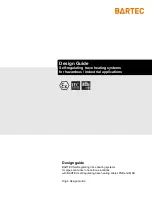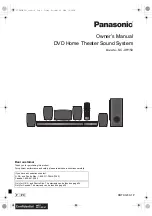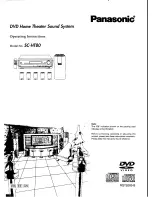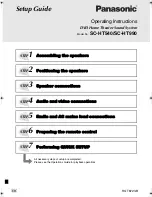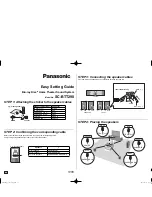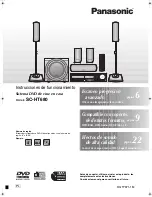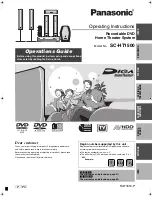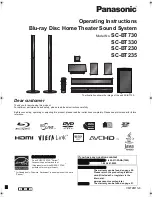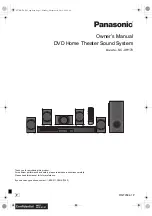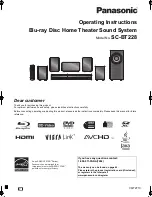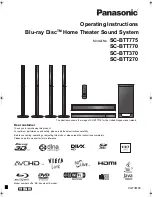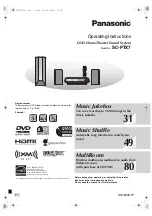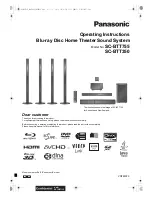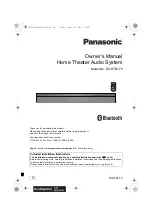
4
the secondary, reflected sound waves. That provides the proper delay needed by our
ears to appreciate the spatial separation of instruments and vocals.
In a two-channel/stereo environment, we recommend you sit at least 6.5 feet (about 2
meters) from the speakers. As a general rule, your two speakers and favorite sofa or
chair should form the three points of an equilateral triangle, which means the speakers
are as far from you as they are from each other. That is a good starting point. Depend-
ing on the size of your room, the sensitivity of your ears, and the reflectivity of the walls,
you can point the speakers straight ahead and directly at you, or angle them in directly
at you.
If, because of your room’s size or layout, your speakers must be close to the side
walls, use an angled in (or a toed-in) position for both speakers to weaken the side-wall
reflections and focus the sound on where you’re seated. Other adjustments you can
experiment with to make the sound suit your preference include:
• Widening the space between the speakers. If your speakers are too close to each other,
the lifelike sound that the THIEL Left/Right speakers are designed to produce will be
less distinct than it should be.
• Angling-in the speakers as you increase the width between them.
• Increasing the space between the speakers and the back wall.
• Increasing the distance of your favorite chair or sofa from the speakers.
• Adjusting your room’s décor.
Furnishings
Yes, furnishings affect your audio experience in both stereo and surround sound
environments. First, avoid placing any large objects (furniture or artwork) close to the
speakers because sound waves will reflect off those objects and alter your enjoyment.
Then, evaluate your room’s acoustic personality. From an audio perspective, rooms are
described as “live” or “dead.”
You have a “live” room if its décor includes a lot of glass, hardwoods (floor, furniture),
and other hard surfaces that reflect sound coming from the speakers. Those types of
furnishings alone may make the recorded tones sharper than you expect or like.
• A wood or glass table between you and the speakers reflects sound away from you.
Move that table to the side of your chair or sofa, if possible.
• To soften the effects of a hardwood floor, add an area rug or carpet between you
and the speakers.
• Hanging soft materials (small rugs or tapestries) on side walls or positioning a
bookcase (without doors) on a side wall can also reduce sound reflection.
You have a “dead” room acoustically speaking if it is decorated with heavy carpet,
drapes, and upholstered furniture. They absorb sound and can make the recorded
details softer or less distinct than you expect or like.
• While removing the carpet in your room may be impractical, you can try removing some of
the upholstered furniture, adding glass or wood pieces, or using a different (less soft) window
covering to help make the sounds more distinct.
Depending on your furnishings, you may need to continue experimenting further with
the placement and angling of your speakers and the location of your favorite sofa or
chair. By trying some of the suggestions above, you’re sure to create the right environ-
ment to enjoy your favorite entertainment.
T H E S U R R O U N D S O U N D S E T U P
Surround sound home entertainment makes you feel right inside the movie’s action or
in the best seats at a concert. If you’re are not sure how many speakers you want for
your home entertainment room, it’s easy to start with a 5.1 system from THIEL, using
one center speaker (a TC1), a subwoofer, a pair of tower speakers (TT1), and a pair
of TM3 bookshelf speakers (on stands or wall-mounted). We’ve designed this series
of speakers to complement each other.
Later, you can easily add a pair of surround sound speakers to that fine array to create
a 7.1 system.
Figure 2
shows the recommended speaker positions in relation to you and each other
for two surround sound options, 5.1 and 7.1. The left/right speakers in a 5.1 system
should either be in line with your sofa/chair, or just behind it. We recommend placing
those speakers on stands or mounting them on the wall so their tweeters are at ear
level when you’re seated. The surround sound speakers should be at ear level or
higher when you’re seated.














